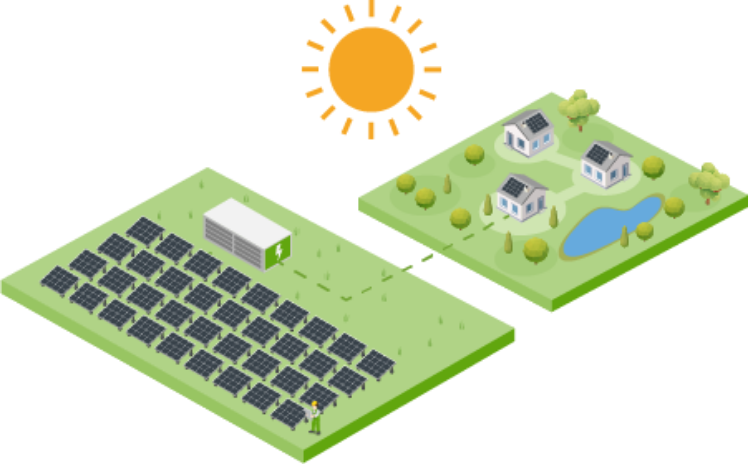We are committed to photovoltaic solar energy
Iberdrola promotes photovoltaic solar energy, one of the company's focal points
As part of the plans for growth in clean energy, solar photovoltaic technology will be backed by 24% of the investment earmarked for renewables in the new 2023-2025 Strategic Plan, which will increase installed solar capacity by 6,300 MW.
Photovoltaic energy, key in the fight against climate change
-
We commission the largest photovoltaic plant in Oregon, USA We put into commercial operation in the United States the Pachwáywit Fields solar plant, the largest in the state of Oregon with 205 MW installed.

-
We present to Europe a project to manufacture photovoltaic panels in Spain The plant will have a production capacity of 1.6 GW per year, equivalent to 3 million panels, and could cover a third of Spain's current demand.

-
We will support Meta's operations in Texas with a new solar farm We signed a PPA with Meta that will secure renewable energy to power its operations in Texas, USA, through the production of the 321 MW True North solar farm.

-
We win our first floating solar project in Alsace The project, with an estimated capacity of 25 MW, will be developed in the Bischwiller quarry, which is partly owned by the municipality of Kurtenhouse.

-
We will build Europe's largest photovoltaic project in Portugal Fernando Pessoa, located in the municipality of Santiago de Cacém, near Sines, a logistics hub in southern Europe, and will have 1,200 MW of installed capacity.

-
We will install our first floating solar power plant in Brazil With some 940 panels, it will cover more than 50 % of the energy needs of the water and sewage distribution network on the island of Fernando de Noronha.

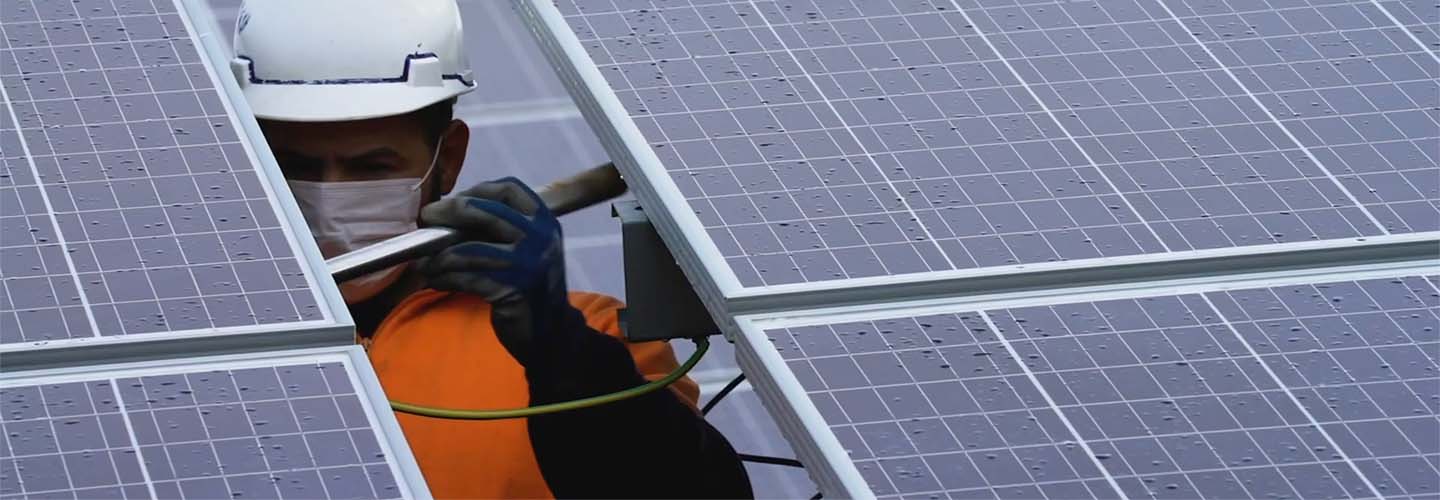
Our most emblematic photovoltaic solar energy projects
-
Francisco Pizarro, the largest photovoltaic project in Europe Iberdrola group is to build the Francisco Pizarro project, which, with its 590 MWp installed capacity, will provide clean energy to 375,000 homes a year and will become the largest photovoltaic plant in Europe.
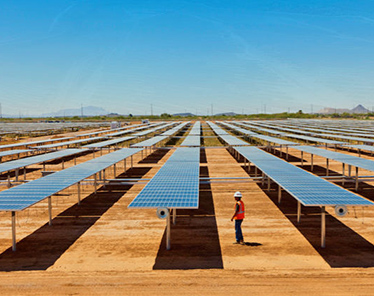
-
Núñez de Balboa, the biggest photovoltaic plant in Europe Iberdrola group has built in Badajoz the Núñez de Balboa photovoltaic plant, which, with 500 MWp of installed capacity and the ability to supply clean energy to 250,000 homes, has become the largest in Europe.
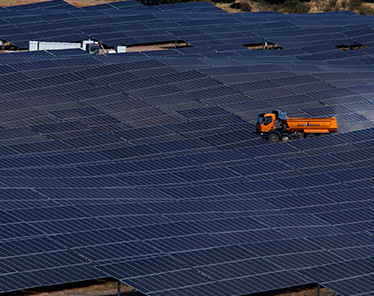
-
Lund Hill, Washington's biggest solar project Iberdrola group is constructing the Lund Hill photovoltaic plant in Klickitat, Washington, USA. With an installed capacity of 193 MW.
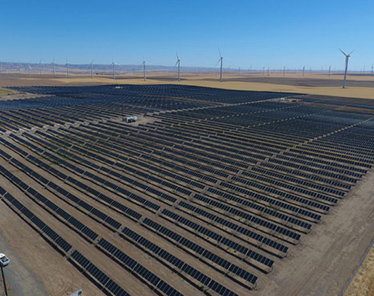
-
Santiago, the largest photovoltaic power station in the world built by Iberdrola The Santiago photovoltaic power station, located in the state of San Luis Potosí (Mexico), is the largest photovoltaic power facility built by the company in the world.
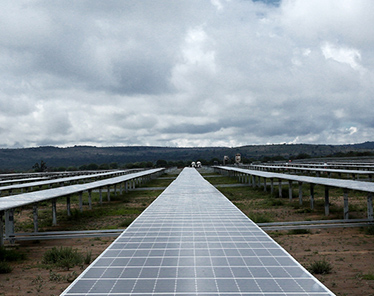
- 1 Iberdrola starts up the world's first wind-solar hybrid plant in Australia
- 2 Iberdrola gets environmental green light for the development of one of its photovoltaic projects in Salamanca
- 3 Iberdrola Deutschland’s first turnkey PV system for on-site consumption enters operation at AkzoNobel
- 4 Iberdrola is looking for innovation projects for the development of its photovoltaic plants
What is photovoltaic energy?
Photovoltaic solar energy is a clean, renewable source of energy that uses solar radiation to produce electricity. It is based on the so-called photoelectric effect, by which certain materials are able to absorb photons (light particles) and release electrons, generating an electric current.
A semiconductor device called photovoltaic cell is used for this purpose, which can be made of monocrystalline, polycrystalline or amorphous silicon, or other thin-film semiconductor materials. The cells made from monocrystalline silicon are obtained from a single crystal of pure silicon and achieve maximum efficiency, between 18 % and 20 % on average.
Those made from polycrystalline silicon are made in blocks from several crystals, so they are cheaper and have an average efficiency of between 16 % and 17.5 %. Finally, those made from amorphous silicon have a disordered crystalline network, which leads to a lower performance (average efficiency between 8 % and 9 %) but also a lower price.
How do photovoltaic plants work?
Photovoltaic solar energy is obtained by converting sunlight into electricity using a technology based on the photoelectric effect. It is a type of renewable, inexhaustible and non-polluting energy that can be produced in installations ranging from small generators for self-consumption to large photovoltaic plants. Find out how photovoltaic energy is obtained.

HOW DO PHOTOVOLTAIC POWER PLANTS WORK?
- 1 Thanks to the photoelectric effect, the electromagnetic radiation emitted by the sun is converted into electrical energy.
- 2 Photovoltaic panels are formed from cells that absorb light particles (photons) and release electrons or direct electric current.
- 3 The continuous electrical energy produced by the panels is converted into alternating current by the inverters.
- 4 Transformers raise the electricity to a medium voltage (up to 36 kV).
- 5 The alternating electric energy, now suitable for consumption, is distributed along transmission lines.
What is photovoltaic self-consumption?
Photovoltaic self-consumption occurs when individuals or companies consume energy produced in photovoltaic generation installations close to the point of consumption. In addition to the solar panels themselves, photovoltaic self-consumption installations are made up of other elements such as inverters, cables, connectors and, optionally, batteries. This type of consumption not only saves on electricity bills, but also contributes to curbing climate change by using renewable energies.
There are two types of photovoltaic self-consumption depending on the destination of the energy that the owner of the installation does not use: self-consumption without surplus, which does not involve the discharge of surplus energy into the grid; and self-consumption with surplus, which allows the injection of surplus energy into the transmission grid.
ADVANTAGES OF PHOTOVOLTAIC SOLAR ENERGY
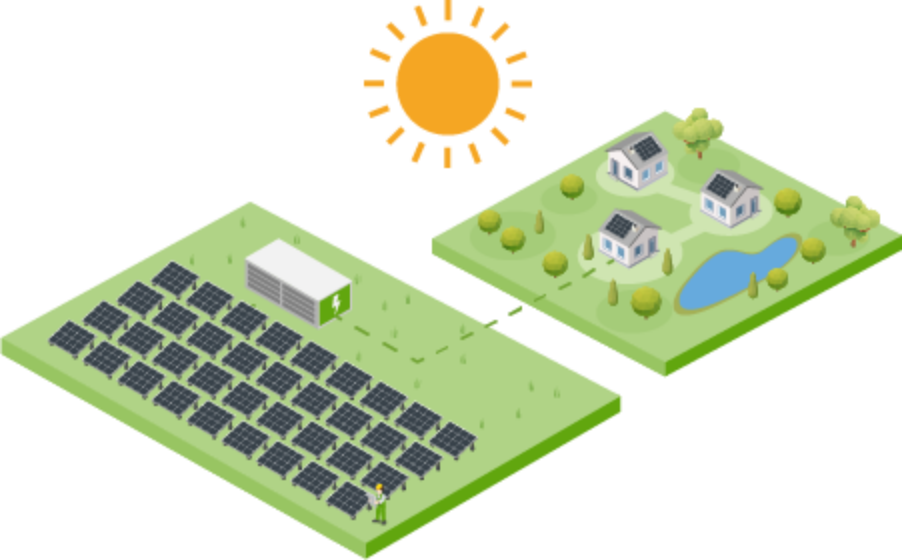
Can be obtained anywhere in the world 365 days a year
It does not consume fossil fuels and does not generate waste
Allows the installation of batteries to store surplus electricity.
Contributes to the creation of green jobs and local economic growth
It can be produced in small generator installations and in large photovoltaic plants







A system suitable where power lines do not reach or are difficult to install

It does not consume fossil fuels and does not generate waste
Can be obtained anywhere in the world 365 days a year
Allows the installation of batteries to store surplus electricity.
A system suitable where power lines do not reach or are difficult to install
Contributes to the creation of green jobs and local economic growth
It can be produced in small generator installations and in large photovoltaic plants
Solar radiation: what is its impact on the planet and on humans?
Solar radiation is the energy emitted by the Sun through electromagnetic waves and life on Earth depends on it. In addition to determining atmospheric and climatological dynamics and trends, it makes plant photosynthesis possible, among other processes. There are several types of radiation with their harmful effects on health, especially on the skin in summer.
Photovoltaic cells: evolution, types and innovations
Solar energy, or photovoltaic energy, is one of the most efficient renewable sources at present and will be key in the process of decarbonising the planet. And all thanks to an essential part: the photovoltaic cell. This electronic device has the capacity to capture and transform light energy into electricity, and in recent years it has continued to evolve in terms of materials and manufacturing techniques.
Solar radiation: what is its impact on the planet and on humans?
Solar radiation is the energy emitted by the Sun through electromagnetic waves and life on Earth depends on it. In addition to determining atmospheric and climatological dynamics and trends, it makes plant photosynthesis possible, among other processes. There are several types of radiation with their harmful effects on health, especially on the skin in summer.
Photovoltaic cells: evolution, types and innovations
Solar energy, or photovoltaic energy, is one of the most efficient renewable sources at present and will be key in the process of decarbonising the planet. And all thanks to an essential part: the photovoltaic cell. This electronic device has the capacity to capture and transform light energy into electricity, and in recent years it has continued to evolve in terms of materials and manufacturing techniques.





